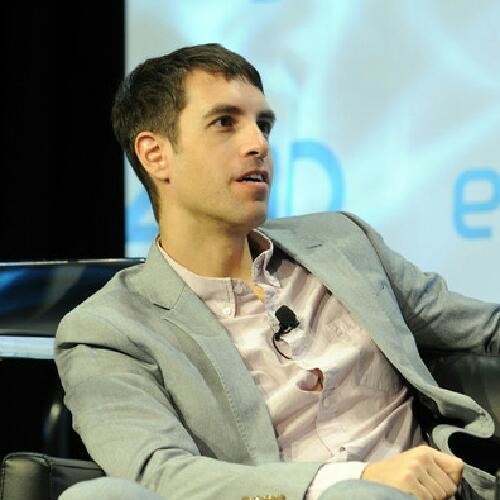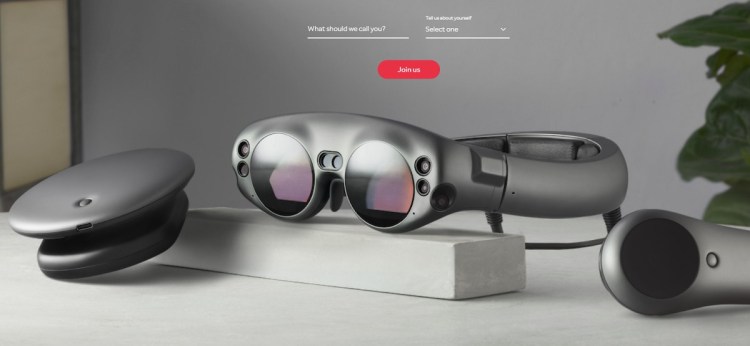2017 was a year full of surprises for the augmented reality industry. Arguably the single biggest development was the emergence of ARKit for iOS devices and ARCore for Android devices. Digi-Capital forecasts that the install base for mobile AR could hit 900 million by the end of 2018.
The sudden emergence of mobile AR on a mass scale, while exciting, raises numerous questions. What will become the killer app? Will even see one? Will consumers adopt an entirely new means of interaction with 3D objects overlaid in space? Who will define the best practices for product design and user experience for this emerging medium? I’ve interviewed eight investors who have provided their insights on risks and opportunities for the AR industry and startups entering the space.
Here’s what I learned.
Don Stein, managing director of Candela Partners

Above: Don Stein
VB: Which opportunities in AR do you see being promising in 2018?
Stein: I’d say there are four main categories we are interested in:
- “Pick and Shovels”: developer toolkits and platforms that will enable and power the first generation of consumer AR applications
- “Enterprise Onramp”: technologies and products that enable companies to begin using AR for key “horizontal” functions such as marketing, customer support, and product design.
- Vertical Solutions: specialty B2B use cases that an AR headset enables that were previously impossible with a PC alone, for industries such as construction, health care, public safety, etc.
- Consumer Mobile: we’re watching traction from consumers around apps built with AR Kit and AR Core to see what killer app might emerge
VB: What do you see as risks and challenges for AR in 2018?
Stein: Timing is the single biggest risk right now, particularly for mobile AR. It’s critical for all stakeholders in this market to be objective and thoughtful about what is and isn’t working effectively. It’s possible that mobile AR won’t be where mass-market AR takes off, and that we’ll have to wait for AR glasses to become ubiquitous.
VB: Tips or advice for early stage AR startups entering the market now?
Stein: For enterprise AR startups: there’s already money to be made right now. The key is to stay patient in the sales process and try to find companies that already have an interest and a thesis around augmented reality. Making ties with the right investors who can introduce you to serious clients will save you a lot of time.
For consumer AR startups: Don’t get overhyped on the large install base. Watch the numbers around mobile AR growth, focus on adoption rates, and be objective about what does and does not constitute a real opportunity.
Greg Castle, founder and managing partner at Anorak Ventures
VB: Which opportunities in AR do you see being promising in 2018?

Above: Greg Castle
Castle: AR will require immense data sets to be transferred. This includes high quality 3D models, being sent back and forth between low-powered devices, and potentially over wireless infrastructure. This challenge presents a substantial opportunity for advancements in rendering technology and communication protocols.
The industry will also require the seamless digitization of real world objects, done at scale. Retail will be transformed by AR/VR. In the same way that consumers wouldn’t purchase an ecommerce product without product photos, we will eventually live in a world where consumers will expect to interact with a 3D model of a product they’re interested in.
VB: What do you see as risks and challenges for AR in 2018?
Castle: Changing consumer habits is incredibly difficult. People today are not accustomed to using their smartphones for AR. This presents a challenge in that the best practices for user experience will have to be defined from scratch and then adopted at scale.
VB: Tips or advice for early stage AR startups entering the market now?
Castle: Solve real problems. Don’t get caught up in the hype cycle around the size of the mobile AR market. Identify real opportunities by solving problems, so that you can build a sustainable business.
Toni Schneider, partner at True Ventures and former CEO of Automattic

Above: Toni Schneider
VB: Which opportunities in AR do you see being promising in 2018?
Schneider: Broadly speaking, platforms and frameworks for developers to build AR applications that enable multiuser experiences, at scale, across devices. Ease-of-use will be particularly important for these platforms: both for developers to deploy, and for users to experience and interact.
VB: What do you see as risks and challenges for AR in 2018?
Schneider: Timing is the biggest risk. Mobile AR will be a great platform for experimentation, although it may ultimately end up as a stepping stone to AR smart glasses. The enormous install base that immediately exists is an obvious strength, as developers can build apps that can reach scale. The long-term issue, however, is that smartphones are probably not the right interface for AR.
Platform companies face the dual challenges of developers needing to adopt their frameworks effectively while also considering the end-user experience. Thus, another challenge is whether developers can create AR applications that are compelling to users, and how quickly those users adapt to mobile AR user interfaces.
VB: Tips or advice for early stage AR startups entering the market now?
Schneider: Use your funding wisely and make it last a long time. It’s unclear what the final form factor for AR will be when this market reaches maturity, but it’s unlikely it will be smartphones. Be thoughtful and create a strategy that will enable you to endure as the market continues to evolve.
Moreover, you won’t be able to improve your product if you don’t have actively engaged users. You should be looking into areas where the market is growing. It may be helpful to look at some success stories from VR, such as BigScreen and their social movie watching experience. Find something that people clearly want to do today, not ten years from now, and create applications that focus on use cases that people will begin using right away.
Ryan Gembala, founder and managing partner of Pathbreaker Ventures
VB: Which opportunities in AR do you see being promising in 2018?

Above: Ryan Gembala
Gembala: We still haven’t found the killer use case or application for smartphone AR. That said, that killer app will probably have these traits: ease of use, aligns with an existing daily activity, and solves a core need that improves with more usage. These sound obvious, but the issue is complex. What constitutes an easy-to-use experience for smartphone AR? Why would you use an AR app several times a day? What compels you to keep checking that app? What fundamental problem are you solving with smartphone AR that wasn’t being solved before?
A team that can build a product that solves these issues, at scale, will uncover a great opportunity for mobile AR.
VB: What do you see as risks and challenges for AR in 2018?
Gembala: Generally speaking, people have never used smartphones for AR. Thus, consumers will have a sharp learning curve regarding how to use mobile AR that might cause friction in user adoption. There needs to be a compelling use case to train this sort of habitual behavior, to create the ‘muscle memory’ among consumers for AR apps. In this sense, UX design will be critically important.
VB: Tips or advice for early stage AR startups entering the market now?
Gembala: Start narrow and do a lot of customer discovery and development. Identify an issue that is solvable with mobile AR as it exists today, for which there is a strong need with a high degree of stickiness and frequent usage. This is particularly true for mobile AR opportunities in the consumer space, although applicable to enterprise AR as well. Then, as the capabilities of the hardware and software evolve, you can evolve in line with them.
Continued on the next page.
Adam Draper, founder and managing director of Boost VC.

Above: Adam Draper
(He aspires to someday build an Iron Man suit.)
VB: Which opportunities in AR do you see being promising in 2018?
Draper: While I’m thrilled at the immediate scale of mobile AR, infrastructure layer developer tools and frameworks will be crucial to make the space take off. This is, in large part, due to the need for multiplayer experiences that are easily accessible across devices, that will persistent in space and time. Thus, the AR Cloud, and AR persistence more broadly, are very interesting opportunities.
On top of this, the first breakout products that will likely emerge from AR Cloud platforms are multiplayer gaming experiences.
VB: What do you see as risks and challenges for AR in 2018?
Draper: The biggest risk is that smartphones end up failing as a form factor for AR. The natural and intuitive way to interact with AR is via glasses or an HMD, not through the tiny window of an iPhone screen. At a technical level, it’s apparent that mobile AR can work at scale and across devices. However, it’s unclear if consumer habits can change to compel people to frequently pull out their smartphones to engage in AR experiences.
VB: What tips or advice would you give to early stage AR startups entering the market at this point?
Draper: Mobile AR is in a bit of a hype cycle due to the immediate scale of the market. However, like the VR market, there is likely to be a “winter”: several years in which industry growth and funding are stagnant. AR startups should raise money, stay lean and adaptable, and survive the winter. Be a cockroach.
Peter Rojas, partner at Betaworks Ventures.

Above: Peter Rojas
VB: Which opportunities in AR do you see being promising in 2018?
Rojas: The most interesting thing at the moment is the sheer scale of the mobile AR market, due to ARKit and ARCore. As such, early opportunities are emerging in creator tools and frameworks to enable developers to build and distribute products.
One constraint (and opportunity) in mobile AR is that startups are going to need to unlock new consumer behaviors. Since AR will be a new means of human-computer interaction, the rules and best practices to create native experiences are unknown. This presents a substantial opportunity to the teams who can figure this out.
VB: What do you see as risks and challenges for AR in 2018?
Rojas: One big challenge is that AR apps will be judged, at least initially, by consumers on the same standard as any regular mobile app. That is: harshly. Developers of mobile AR products will have to succeed in finding product-market fit, an elegant user experience, growth, revenue, and scale — while simultaneously being constrained by the immature state of smartphone AR.
At the end of the day, a mobile AR product is still an app that is competing with other apps. It’s possible that a team will be unable to gain sufficient user adoption and retention to justify additional rounds of funding.
VB: What tips or advice would you give to early stage AR startups entering the market at this point?
Rojas: Be thoughtful about how to unlock new user behaviors. With early smartphones, the initial reaction from the developer community was to rely on many of the design paradigms of desktop PC applications, shoehorning them onto the smaller smartphone screen, resulting in awful user experiences. It took several years before a cohesive and user-friendly design language emerged that was native to the smartphone screen and form factor.
Hadley Harris, founding general partner at Eniac Ventures

Above: Hadley Harris
VB: Which opportunities in AR do you see being promising in 2018?
Harris: We at Eniac broadly are interested in two categories:
- Developer tools that will enable teams to build experiences at scale
- Enterprise AR in constrained environments, with compelling single use cases where value can be captured
VB: What do you see as risks and challenges for AR in 2018?
Harris: Market timing will be a big risk for both founders and investors. Even as the adoption of AR-capable hardware expands, it’s still unclear when the first batch of mass-adopted applications will succeed.
VB: What tips or advice would you give to early stage AR startups entering the market at this point?
Harris: Think long-term. It’s critical that teams give themselves enough runway and cash to survive. That said, when the AR market shifts, it will happen dramatically and quickly. The AR market will feel immature for a while, then suddenly great opportunities will emerge as consumer behavior and AR platforms reach a tipping point. Raise funding, keep your burn rate low, and keep your eyes open for the shift.
Bill Malloy, founding general partner at Sway Ventures
VB: Which opportunities in AR do you see being promising in 2018?
Malloy: This is a tricky question to answer because the market is quite immature and fragmented, like VR has been and continues to be. We’re still at the starting line for what will become a marathon, and not a sprint, to ubiquitous AR.
As such, we’re focusing on identifying teams with unique insights about solving specific problems with AR, that they are well-positioned to tackle. Since both the hardware and software will continue evolving, it’s possible that what seems like an opportunity in 2018 morphs into something very different in 2019. What will remain, however, is the team and their dedication to tackling the problem.
In short, 2018’s best AR opportunities lie in identifying talented teams with unique domain expertise, tackling big problems, who are adaptable and resilient enough to evolve with the market.
VB: What do you see as risks and challenges for AR in 2018?
Malloy: This market is fraught with uncertainty in nearly every way. It’s unclear what metrics and KPIs will determine success, particularly since AR will unfold on devices already used at scale, but the user behavior will be different from it is for typical mobile apps. Retention will remain a reliable barometer for success, although since the market is constantly shifting, short-term retention for one product or platform could become irrelevant at any time.
Moreover, as the market progresses, certain platforms will launch, gain adoption, and fail. As such, the developer community faces an extra layer of risk in potentially making bets on the wrong technology.
VB: What tips or advice would you give to early stage AR startups entering the market at this point?
Malloy: Understand your customers. This is true for any business but particularly crucial in a market as immature and fragmented as AR. You’ll want to collect as much data as you possibly can about what’s happening at a macro level (market) and micro level (customers). At the end of the day, your team’s goal is to solve problems for customers. If you accomplish this, you’ll be able to weather the storm and adapt to the ever-changing landscape.
Michael Park is the CEO and cofounder of Spatial Canvas, an AR persistence SDK that lets you build, explore, and share augmented realities.

